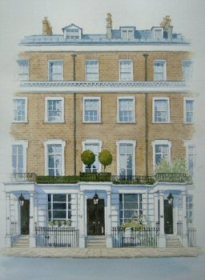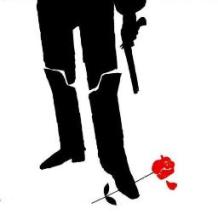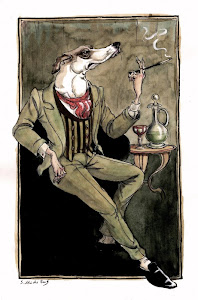 By the late Sixties, American opinion leaders openly encouraged the wholesale expropriation of WASP culture. Time magazine, for example, pointedly unhooked WASP identity from any particular race, religion, or ethnicity. In fact, America's leading newsweekly issued, in its most magisterial manner, a journalistic dispensation authorizing collective identity theft on a mass scale. "Ultimately," its middle class readers were informed, "Waspism may be more a state of mind, a pattern of behavior, than a rigid ethnic type." Since some "non-Wasps display all the characteristics normally associated with the most purebred Wasps," being "white, Anglo-Saxon and Protestant" is not enough to make someone a Wasp in spirit." Signalling the final collapse of Anglo-Saxon Protestant hegemony, the magazine consigned the ethnoreligious signifier in an already "mildly offensive" ethnonym to lower-case orthography. "Waspism" was defined not as an ethnicity but as an upper-middle class lifestyle, the product not of British blood but of the "right education, style, social position, genealogy, achievement, wealth, profession, influence or politics." From the commanding heights of the corporate media, Time extended its blessing to a rapidly expanding class of "Waspirants" altogether bereft of ancestral ties to England.
By the late Sixties, American opinion leaders openly encouraged the wholesale expropriation of WASP culture. Time magazine, for example, pointedly unhooked WASP identity from any particular race, religion, or ethnicity. In fact, America's leading newsweekly issued, in its most magisterial manner, a journalistic dispensation authorizing collective identity theft on a mass scale. "Ultimately," its middle class readers were informed, "Waspism may be more a state of mind, a pattern of behavior, than a rigid ethnic type." Since some "non-Wasps display all the characteristics normally associated with the most purebred Wasps," being "white, Anglo-Saxon and Protestant" is not enough to make someone a Wasp in spirit." Signalling the final collapse of Anglo-Saxon Protestant hegemony, the magazine consigned the ethnoreligious signifier in an already "mildly offensive" ethnonym to lower-case orthography. "Waspism" was defined not as an ethnicity but as an upper-middle class lifestyle, the product not of British blood but of the "right education, style, social position, genealogy, achievement, wealth, profession, influence or politics." From the commanding heights of the corporate media, Time extended its blessing to a rapidly expanding class of "Waspirants" altogether bereft of ancestral ties to England.The WASP Question: An Essay on the Biocultural Evolution, Present Predicament, and Future Prospects of the Invisible Race, Andrew Fraser (2011)





















8 comments:
There was a 'Back to College' series of fashion plates in either Esquire or GQ magazine in the late 1970s (or perhaps very early 1980s), which I have not been able to locate. In any case, it serves as a good visual support for this article. It showed some tall 'Waspy" types mixed with short, 'nerdy' types dressing in 'Preppy' cum 'Ivy League' clothing - e.g., chinos, university stripe button downs, regimental rep ties, traditional plaid flanel hunting shirts, etc. - with the implied message: "You've arrived, and this is how we dress." If someone can reference this series of fashion plates, I would appreciate it.
A Wasp is a white, Anglo-Saxon Protestant. End of discussion!
The angles and saxons were germanic peoples; what about the welsh and scots and scots irish?
I would be happy to see more people dressing like WASPS if they did so for the right reasons. Sorry GQ and Lisa Birnbach, dressing well is not about attracting attention or creating an image of wealth and success. Rather, it is just one outward manifestation of a character that rejects the hysterics and confusion of modernity in favor of the timeless values of courtesy, self-discipline, and tradition. Four years at a "preppy" college left me with little patience for spoiled radicals in J. Crew, whether or not they were ethnically 'WASP'.
AND what about the Cornish, since we were central to innovations in modern mining techniques and steam transport, which were very influential in enabling WASP culture to dominate the world in the 19th and 20th Centuries.
AND, let us not forget that the Cornish cook up a rather tasty Game Hen.
Picts and Celts are very underrated.
I view American Anglo-Saxons this way:
WASPS - The old stock, old money, East Coast Anglo Saxon upper class. Modern English immigrants from the traditional English upper class would probably gravitate to this group and would be accepted by them.
ASAs - Anglo Saxon Americans, old stock, possessing various degrees of wealth, political influence/involvement, and corporate influence/involvement. This group lacks the tribal associations and connections of the WASPs. They normally attend public schools and universities. Found everywhere outside the South, the catchall catagory. Most modern English immigrants would gravitate to this group and would quickly assimilate. Peter Brimlow has assimilated into this group.
SASAs - Southern Anglo Saxon Americans - as above, but following or holding dear at least some of the pre 1960s cultural traditions of the Southern Nation. SASAs lack the tribal associations and connections of the TASAs. Many of these people are descended from the enlisted men and non aristocratic officers (such as Lieut. Gen. Nathan B. Forrest) of the Confederate Army. Poor whites and Southern 'crackers' are members of this group. The War Between the States, rather than the American Revolution, is the defining historical event of this group.
TASAs - Tidewater Anglo Saxon Americans - old stock, descendants of the traditional Southern upper class, mataining at least respect for the genteel traditions of the Ante-Bellum and Colonial South. The modern representatives of the FFV and the great Southern landed families would be found here. Examples woud be the Lees, Randolphs, Hamptons, etc. This is the smallest and least influential of the Anglo Saxon American groups, but the TASAs are still strong in three or four of the Southern states.
SWPLASAs - Stuff White People Like Anglo Saxon Americans - East and West Coast middle and upper middle class. Self-consciously deracinated. Bill Gates, Jerry Brown and Robert Redford are good examples of people in this group. Hipsters and grunge rockers are subtypes of this group. This group is uniformly progressive and uniformly politically correct.
Post a Comment